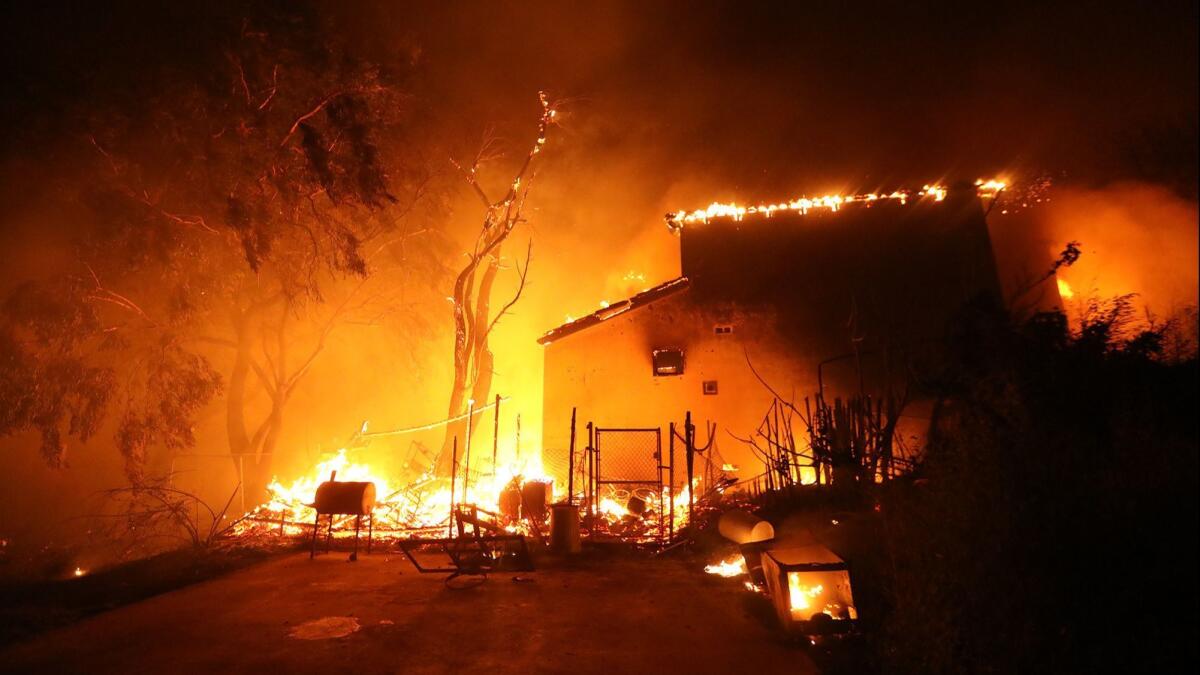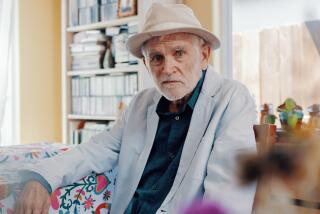Column: Revisiting Mike Davis’ case for letting Malibu burn

- Share via
During fire season, I always think about Mike Davis, author of one of the most — pardon the pun — incendiary essays in the annals of SoCal letters: “The Case for Letting Malibu Burn.” I return to this chapter from his book “Ecology of Fear” any time that the Santa Ana winds howl and thousands flee raging infernos — a ritual that used to happen every couple of years but now seems to happen every couple of months.
“The Case for Letting Malibu Burn” is a powerhouse of history, science, Marxist analysis — and a certain amount of trolling. Its main point is that Southern Californians will never accept that fire is not only common here, but part of our ecology going back centuries. To spend millions saving homes in areas never meant for neighborhoods and power lines is not just folly, but a waste of public resources.
This time around, as California burned from the north to the south, I checked in via email with Davis, now professor emeritus at UC Riverside. He’s best known for his literary double whammy against Los Angeles exceptionalism: 1990’s “City of Quartz” and 1998’s “Ecology of Fear.” Those books made the Los Angeles of “Chinatown” seem as sinister as Mayberry. Davis’ tales of racism, poverty, corruption and other sins — backed by copious footnotes — inspired a generation of radical historians and writers, including yours truly. He also riled an army of detractors who so hated his apocalyptic warnings that they ridiculed everything from his scholarship to his marriages to the fact that he was born in Fontana.
To spend millions saving homes in areas never meant for neighborhoods and power lines is not just folly, but a waste of public resources.
But as the years go on, Davis’ bleak words read more like revelations than rants. Just as he argued, we build deeper into canyons and foothills, daring Mother Nature to give us her best shot — and then are shocked when she does.
The Woolsey fire has already scorched more than 96,000 acres in Ventura and Los Angeles counties, destroying 435 structures in Malibu and other cities. It’s yet another “fire of the century” for the beach city.
“Maybe 10 or 20 years ago, you stayed in your homes when there was a fire and you were able to protect them,” Ventura County Fire Chief Mark Lorenzen said during a news conference this weekend. “We’re entering a new normal. Things are not the way they were 10 years ago.”
In other words, we now live in Mike Davis’ world. He has ascended to the pantheon of Golden State visionary authors like Helen Hunt Jackson, Upton Sinclair and Carey McWilliams who held up a mirror to us that we have ignored at our own peril.
“The Case for Letting Malibu Burn” depicted Malibu and other wealthy cities built in the boonies as created not for “love of the great outdoors or frontier rusticity,” but rather as “thickets of privacy” against L.A.’s working classes and people of color.
We enable this white flight into the mountains, he argued, by not just allowing development where there shouldn’t be any, but also subsidizing those affected by the inevitable wildfire in the form of cheap fire insurance and squadrons of first responders deployed around the clock at the hint of an ember.
He went through a litany of Malibu blazes over the last century, concluding with the Old Topanga blaze of 1993 — which consumed about 18,000 acres but destroyed 323 structures. Throw in climate change, Davis noted in a version of his essay that appeared in the L.A. Weekly, and the catastrophe “marked a qualitative escalation in fire danger, if not the actual emergence of a new, post-suburban fire regime.”
And, almost exactly 25 years later, here we are again.
Davis’ work on Malibu’s flames has aged far better than the criticism of it. Chapman University urban studies fellow Joel Kotkin, for instance, said of “Ecology of Fear” back in the 1990s that it “basically mugs Los Angeles” and is “truly nauseating stuff.” Yet by 2007, Kotkin told the Economist, in an article about the fires that fall that wreaked havoc from San Diego to Santa Barbara, that “nature still has a lot of power” in the once-unspoiled areas where we build homes — which is what Davis contended all along.
Then there’s former Malibu real estate agent Brady Westwater, who refashioned himself as a downtown L.A. booster. You couldn’t write about “Ecology of Fear” for years without mentioning Westwater, who hounded reporters with screeds and stats about Davis’ real and alleged errors until the press finally began to cite him as a legitimate critic.
Enter the Fray: First takes on the news of the minute »
In his own 1998 essay (whose titled described Davis as a “purposefully misleading liar”), Westwater predicted that “fire damage will decrease over the years” in Malibu because of better infrastructure and better-built homes. Of the Old Topanga disaster, he plainly declared: “That kind of fire can never happen again.”
And yet here we are again.
Davis remains persona non grata in Malibu, from Neptune’s Net to Pepperdine University. Malibuites took “The Case…” as a direct attack on their beliefs and ways of life.
Davis takes no satisfaction in seeing his analysis come true all over again. But the author, who’s recovering from cancer, stands by what he wrote.
“I’m infamous for suggesting that the broader public should not have to pay a cent to protect or rebuild mansions on sites that will inevitably burn every 20 or 25 years,” he told me. “My opinion hasn’t changed.”
Twitter: @GustavoArellano
More to Read
A cure for the common opinion
Get thought-provoking perspectives with our weekly newsletter.
You may occasionally receive promotional content from the Los Angeles Times.







